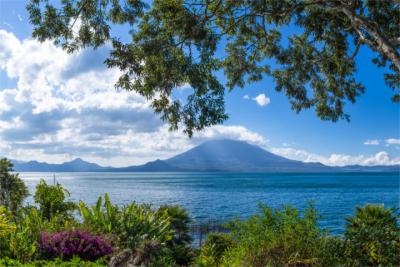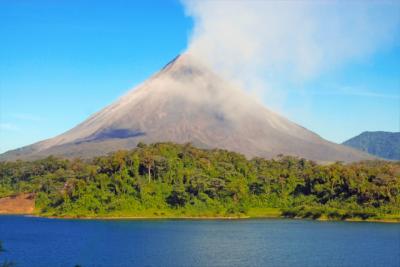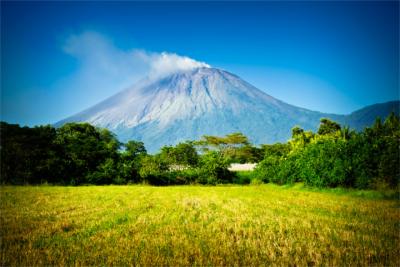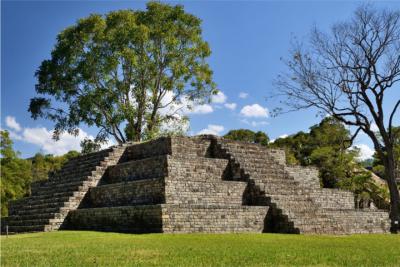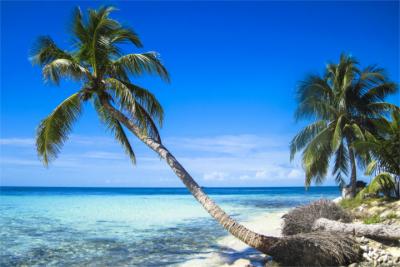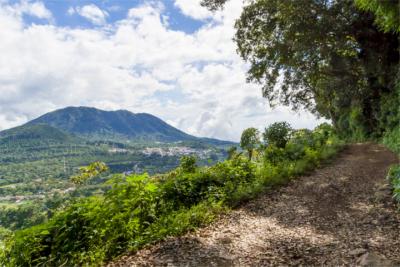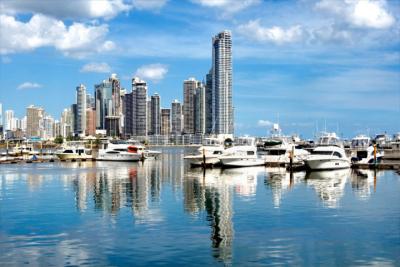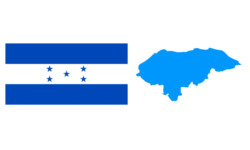Travel Offers
Travelmyne Featureprint
Distance
Honduras - Following the Traces of the Maya
Central America's second biggest country is not a typical tourist destination but it offers a real treasure of untouched landscapes and culture. The Caribbean beaches and the natural rainforests are as adventurous as the ruins of the Maya civilisation and the spear skills of the Miskito people.

Geography - Under the tropical sun
Honduras is the second biggest country in Central America and borders on Nicaragua, Guatemala and El Salvador. The tropical country lies at the Caribbean Sea and has access to the North Pacific. Its capital Tegucigalpa is also Honduras' biggest city. Other cities which are relevant to tourism are San Pedro Sula, La Ceiba and Comayagua. The tropical climate offers consistent temperatures around 23 °C all year. However, there is a long rainy season in summer and autumn, during which the country regularly suffers hurricanes.

Nature - Untouched rainforests and fine Caribbean beach
Marshes, rivers and lagoons cross Honduras' vast coastal plain. Behind it, you see the long sandy beaches of the Caribbean coast. Honduras offers a diverse natural landscape and has the right ambience for everyone. Its mountainous area with peaks which are over 2,000 metres high is as appealing as its untouched rainforests. Over 40 percent of the country's area are still forested. They are home to crocodiles and jaguars. Turtles lay their eggs between the palms at the beach. There is a number of volcanic islands before the Caribbean coast, which are enclosed by a large reef system. Bananas and tobacco are grown in the fertile basins in the heartland.

Natural sights - Island magic in front of Honduras
The country's greatest nature reserve is the Río Plátano Biosphere Reserve. It accommodates the last Central American rainforest areas which are still intact. Pico Bonito National Park is equally rich in species and unspoiled. Near the capital, you see a magical cloud forest in La Tigra National Park. The main attraction, however, is the Bay Islands Department (Islas de la Bahía). This Caribbean island group is pleasantly green, hilly and surrounded by the second greatest coral reef system on earth. In addition, it contains wonderful sandy beaches and beautiful palm groves. The Cayos Cochinos Marine Reserve also offers lively and colourful coral reefs.

Culture - From the Maya to the Miskito
The country's pyramids, temples and stone sculptures bear witness to the ancient Maya to the present say. Some traces of the former advanced civilisation have not been discovered yet and it is assumed that the thick rainforest is populated by more tribes. While the kingdom of the Maya has fallen, other indigenous ethnic groups still live in Honduras and maintain their traditions. The Miskito people still live in villages in the deep jungle, go spearfishing and prepare their traditional dishes. With a bit of luck, travellers can experience this native side of the country. The life in the city looks different. Honduras made the headlines as a "banana republic" full of corruption and drug abuse. The majority of the population lives below the poverty line. The country suffered a catastrophe in 1998. Hurricane Mitch devastated almost all of Honduras and made it even more difficult for the inhabitants to build an infrastructure and a functioning political system. But against all the odds, Honduras offers several very beautiful and culturally interesting travel destinations.

Cultural sights - Discoveries in the primeval jungle
Near Copán, you find the archaeological park of the Maya, which contains countless ruins of the former advanced civilisation. Many of the stone sculptures are still in very good condition. In addition, you see a court and temple building as well as an amphitheatre. The city of Trujillo was the country's capital in colonial times. It is said to be the point where Columbus first set foot on mainland America. Later on, Trujillo became known as a pirates' nest. Some pirates' tombs can be visited to the present day. The port city of La Ceiba lies at the coast and is full of Caribbean charm. The great carnival parade is particularly popular with the locals and visitors. Worthwhile destinations in the country's capital are the trim city parks.

Experience - Enchiladas and cigars
Although many bananas are grown in Honduras, the local menu contains many other delicacies. Enchiladas and tortillas are typical Spanish specialities but they are often prepared in a local way. The freshly caught seafood at the Caribbean coast and the delicious sweet fruit are highly recommended. You find interesting shopping facilities in San Pedro Sula. The handicraft of the Indigenas, handmade cigars or glass jewellery are common souvenirs. After a shopping trip, travellers can dive into San Pedro Sula's exciting nightlife. The most important address is the Zona Viva. You walk through the city in groups at night. During the day, holidaymakers can go on a trip to the Caribbean island of Roatán. In the coastal waters, you see bizzare-looking shipwrecks which ran aground centuries ago.

Activities - Fun at the seaside in the Caribbean
The country's Caribbean side is an excellent location for fun at the seaside. Water sports such as canoeing, snorkelling and diving are possible here. Since Honduras is not a very well-known travel destination yet, its beaches are rarely crowded. The islands of the Islas de la Bahía are highly recommended. The bathing resort of Tela offers several wonderful tropical beaches and a great observation platform with a panoramic view of the coast. If you want to get to know the country's heartland, you should go on a trip in a dugout canoe. This way, tourists can experience the green jungle along the rivers at first hand.

Information
The best time for visitors of Honduras' capital is from February to March. During this time, it is pleasantly dry and mild. Since Spanish is the country's native language, it pays out to refresh one's language skills beforehand. English is only spoken on the Bay Islands.
Honduras is an adventure for all jungle fans and beach-goers. The wonderful nature and the stunning blue sea of the Caribbean make the country a special insider tip, which requires a certain amount of preparation.

